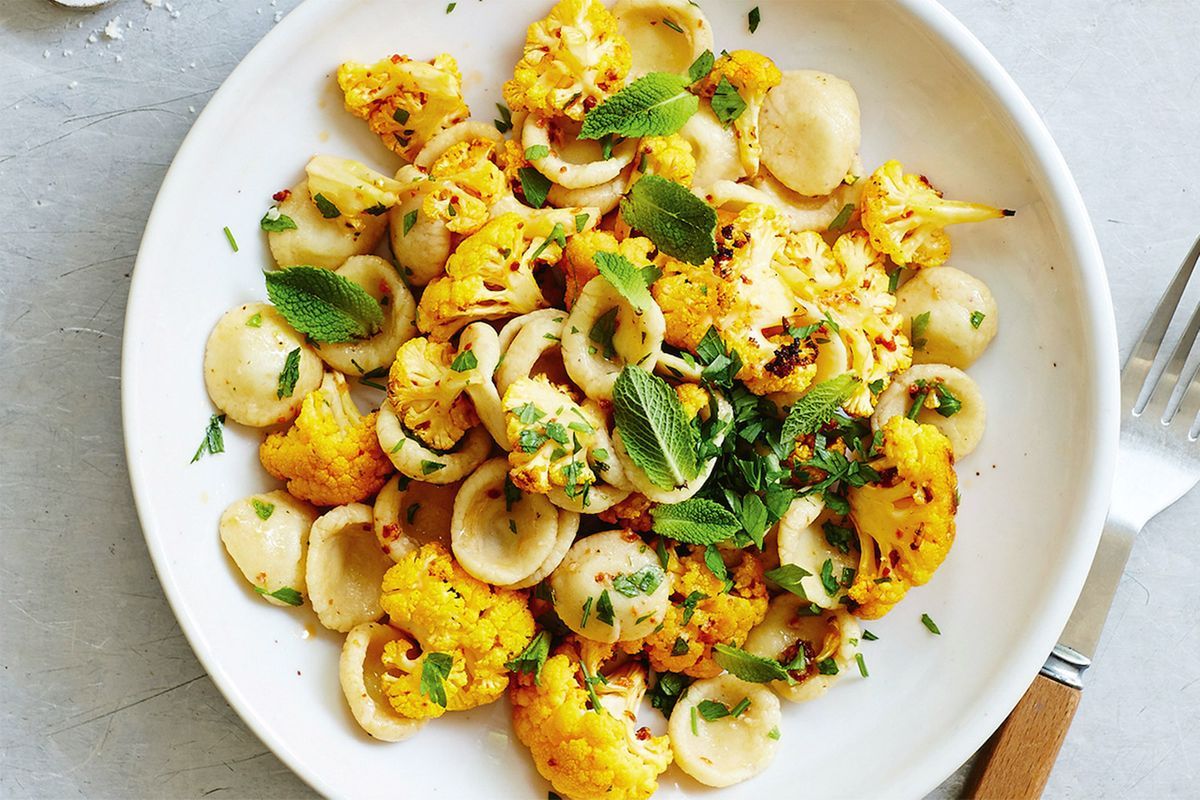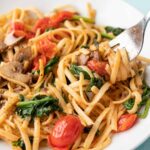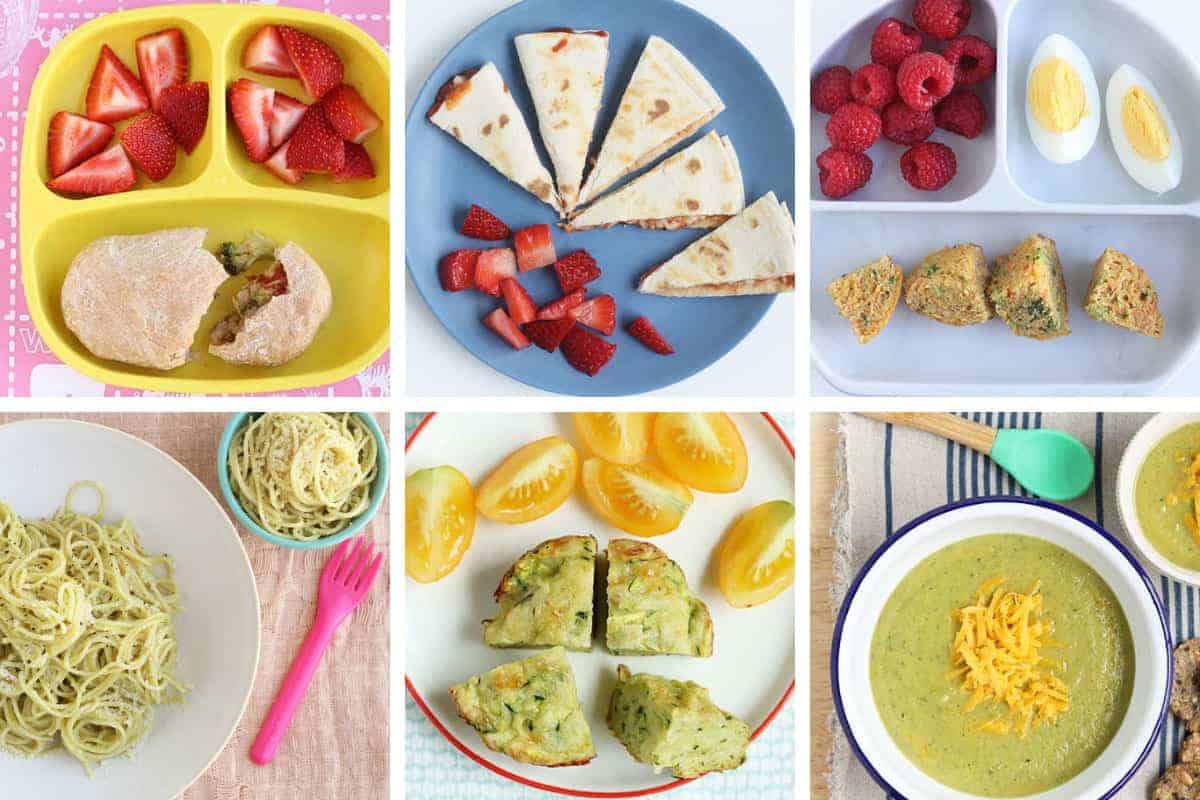Embark on a culinary journey exploring the vibrant world of healthy flexitarian dishes. This guide unveils the secrets to creating flavorful and nutritious meals that seamlessly blend plant-based and animal-derived proteins. Discover exciting flavor combinations, detailed recipes for breakfast, lunch, and dinner, and practical meal prep strategies designed for busy lifestyles. We’ll delve into the art of incorporating seasonal produce to maximize flavor and nutritional value, ensuring every bite is a delicious and healthy experience.
From mastering the art of combining savory and sweet profiles to understanding the nutritional benefits of diverse plant-based proteins, this guide provides a comprehensive approach to flexitarian eating. Learn how to adapt recipes to accommodate various dietary restrictions, and discover the joy of creating visually appealing dishes that are as delightful to look at as they are to eat. We’ll equip you with the knowledge and tools to confidently navigate the world of flexitarian cooking, transforming your meals into a celebration of both taste and well-being.
Recipe Ideas for Healthy Flexitarian Meals

Flexitarian eating offers a delicious and nutritious way to incorporate more plant-based meals into your diet while still enjoying the occasional meat dish. These recipes highlight the versatility of plant-based proteins, showcasing their ability to create satisfying and flavorful meals. Each recipe is designed to be both easy to prepare and packed with essential nutrients.
Breakfast: Savory Quinoa and Black Bean Breakfast Bowl
This vibrant breakfast bowl provides a hearty and satisfying start to the day, rich in protein and fiber. The quinoa offers a complete protein source, while black beans contribute further protein and fiber, keeping you feeling full and energized. The combination of sweet and savory flavors creates a delightful culinary experience.
- Ingredients: 1/2 cup quinoa, 1 cup water, 1/2 cup cooked black beans, 1/4 cup chopped red onion, 1/4 cup chopped bell pepper (any color), 1/4 avocado, diced, 1 tablespoon chopped cilantro, 1 tablespoon lime juice, pinch of cumin, salt and pepper to taste.
- Instructions: Rinse quinoa and cook according to package directions. While quinoa cooks, sauté red onion and bell pepper in a small pan until softened. Combine cooked quinoa, black beans, sautéed vegetables, avocado, cilantro, lime juice, cumin, salt, and pepper in a bowl. Mix well and serve.
Visual Description: The breakfast bowl is a colorful medley of textures and hues. The fluffy, pearly white quinoa contrasts with the deep black of the beans, the vibrant red or green of the bell pepper, and the creamy green of the avocado. The cilantro adds pops of bright green, while the red onion offers subtle purple accents. The aroma is fresh and zesty, with hints of lime and cumin. Plating the bowl in a shallow, wide dish allows the colors to stand out.
Lunch: Lentil and Vegetable Curry with Brown Rice
This hearty and flavorful lentil curry is packed with protein and fiber, making it a perfect and satisfying lunch option. The combination of warming spices and tender vegetables creates a complex and delicious taste profile. Brown rice adds a wholesome base and provides additional fiber.
- Ingredients: 1 cup red lentils, 1 tablespoon olive oil, 1 onion, chopped, 2 cloves garlic, minced, 1 inch ginger, grated, 1 teaspoon curry powder, 1/2 teaspoon turmeric, 1/4 teaspoon cumin, 1/4 teaspoon coriander, 1 cup chopped vegetables (carrots, peas, cauliflower), 1 can (14 oz) diced tomatoes, 1 cup vegetable broth, salt and pepper to taste, cooked brown rice for serving.
- Instructions: Sauté onion, garlic, and ginger in olive oil until softened. Add curry powder, turmeric, cumin, and coriander and cook for 1 minute. Stir in lentils, vegetables, diced tomatoes, and vegetable broth. Bring to a boil, then reduce heat and simmer for 20-25 minutes, or until lentils are tender. Season with salt and pepper to taste. Serve over cooked brown rice.
Visual Description: The curry is a rich, vibrant orange-red, speckled with the colors of the various vegetables. The lentils are tender and creamy, contrasting with the slightly firmer texture of the vegetables. The aroma is warm and inviting, filled with the fragrant spices of curry, turmeric, and cumin. Serve in a shallow bowl, garnished with a dollop of plain yogurt or a sprinkle of fresh cilantro for added visual appeal.
Dinner: Mushroom and Tofu Stir-Fry with Noodles
This quick and easy stir-fry is a delicious and nutritious dinner option, combining the earthy flavors of mushrooms with the protein-rich tofu. The addition of noodles provides a satisfying carbohydrate source, while a variety of vegetables add essential vitamins and minerals.
- Ingredients: 1 block firm tofu, pressed and cubed, 1 tablespoon olive oil, 1 onion, sliced, 8 oz mushrooms, sliced, 1 bell pepper, sliced, 1 cup broccoli florets, 2 cloves garlic, minced, 1/4 cup soy sauce, 2 tablespoons rice vinegar, 1 tablespoon sesame oil, cooked noodles of your choice.
- Instructions: Heat olive oil in a wok or large skillet over medium-high heat. Add tofu and cook until golden brown. Add onion, mushrooms, and bell pepper and cook until softened. Stir in garlic, soy sauce, rice vinegar, and sesame oil. Cook for 1-2 minutes, or until sauce thickens. Serve over cooked noodles.
Visual Description: The stir-fry is a vibrant mix of colors and textures. The golden-brown tofu cubes contrast with the earthy brown of the mushrooms, the bright green of the broccoli, and the colorful bell pepper. The glossy sauce adds shine and depth. The aroma is savory and slightly sweet, with a hint of sesame oil. Plating the stir-fry on a bed of noodles in a shallow bowl creates a visually appealing and balanced dish.
Incorporating Seasonal Produce
Harnessing the bounty of seasonal produce elevates flexitarian cooking to a new level. The vibrant flavors and peak nutritional content of in-season ingredients dramatically enhance the taste and health benefits of your meals, offering a more sustainable and delicious culinary experience. Choosing seasonal produce reduces your environmental footprint by supporting local farmers and minimizing transportation distances.
Seasonal produce boasts superior flavor and texture compared to out-of-season options often relying on extensive transportation and artificial ripening. The intense sunshine and ideal growing conditions during peak season translate to a more concentrated burst of flavor and a firmer, more appealing texture in your dishes. Moreover, seasonal fruits and vegetables are naturally richer in vitamins, minerals, and antioxidants, maximizing the nutritional impact of your flexitarian meals.
Seasonal Menu Plan
A thoughtfully planned seasonal menu showcases the versatility of seasonal ingredients. The following menu plan illustrates how to incorporate seasonal produce across three meals per season, highlighting the diverse culinary possibilities available throughout the year.
Spring:
- Asparagus and Pea Risotto with Lemon-Herb Grilled Tofu: Imagine the tender, vibrant green asparagus spears and sweet peas mingling with creamy risotto, complemented by the savory char of grilled tofu infused with bright lemon and fresh herbs. The dish bursts with spring’s fresh flavors.
- Strawberry Spinach Salad with Poppy Seed Dressing and Toasted Almonds: A delightful combination of sweet and savory, this salad features juicy, sun-ripened strawberries paired with tender spinach, crunchy toasted almonds, and a tangy poppy seed dressing. The contrasting textures and flavors create a refreshing and satisfying meal.
- Spring Vegetable Frittata with Goat Cheese and Chives: A vibrant frittata brimming with colorful spring vegetables like zucchini, bell peppers, and scallions, all enhanced by creamy goat cheese and fragrant chives. This is a versatile and protein-packed breakfast or brunch option.
Summer:
- Grilled Corn and Black Bean Salad with Avocado Crema and Lime Dressing: Sweet, juicy grilled corn kernels mingle with hearty black beans, creamy avocado, and a zesty lime dressing, creating a vibrant and refreshing summer salad. The textures and flavors are a perfect complement to grilled fish or chicken.
- Gazpacho with Grilled Halloumi: A chilled Spanish soup bursting with the flavors of ripe tomatoes, cucumbers, bell peppers, and onions. The addition of salty, grilled halloumi cheese provides a delightful contrast in texture and taste. A perfect light lunch or starter.
- Peach and Burrata Pizza with Balsamic Glaze: A sweet and savory pizza featuring juicy, ripe peaches, creamy burrata cheese, and a drizzle of balsamic glaze. The combination of textures and flavors makes this a unique and delicious summer meal.
Autumn:
- Butternut Squash and Apple Soup with Toasted Pepitas: A creamy and comforting soup featuring the sweetness of butternut squash and apple, enhanced by the nutty crunch of toasted pepitas. A perfect autumnal starter or light meal.
- Mushroom and Kale Risotto with Parmesan Cheese: Earthy mushrooms and hearty kale combine with creamy risotto and a generous sprinkle of Parmesan cheese. This hearty and satisfying dish is perfect for a cooler evening.
- Roasted Brussels Sprouts with Maple-Dijon Glaze and Lentils: Crispy roasted Brussels sprouts tossed in a sweet and tangy maple-dijon glaze, paired with protein-rich lentils, create a delicious and satisfying autumnal side dish or main course.
Winter:
- Root Vegetable Stew with Chickpeas and Coconut Milk: A hearty and warming stew featuring a medley of root vegetables like carrots, parsnips, and sweet potatoes, combined with chickpeas and creamy coconut milk. This is a nourishing and flavorful winter warmer.
- Kale and White Bean Soup with Sausage (optional): A simple yet satisfying soup made with nutritious kale and white beans. Adding Italian sausage (optional) provides extra protein and flavor. A perfect light lunch or dinner.
- Roasted Cauliflower with Tahini Dressing and Pomegranate Seeds: Roasted cauliflower florets tossed in a creamy tahini dressing and topped with vibrant pomegranate seeds create a beautiful and flavorful winter side dish. The contrasting textures and flavors are a delight.
Adapting Recipes Based on Seasonal Availability
Adapting recipes based on seasonal availability is straightforward. For instance, if a recipe calls for summer tomatoes in winter, you can easily substitute them with canned diced tomatoes or roasted red peppers. Similarly, if fresh basil is unavailable, dried basil can be used (though using a smaller quantity is recommended). Substituting ingredients allows for continued enjoyment of your favorite recipes throughout the year, utilizing the freshest and most flavorful ingredients available. Remember to adjust seasonings accordingly to compensate for any flavor differences between the original and substituted ingredients.
Meal Prep Strategies for Busy Individuals
Efficient meal preparation is key to maintaining a healthy flexitarian diet while juggling a busy lifestyle. A well-planned approach minimizes time spent cooking each day, reduces food waste, and ensures you consistently enjoy nutritious and flavorful meals. This section details a sample 7-day meal prep plan, outlining preparation steps, storage techniques, and a comparison of different meal prep methods.
Seven-Day Flexitarian Meal Prep Plan
This plan emphasizes versatility and minimizes waste by using ingredients across multiple meals. The focus is on quick cooking times and easy assembly, ideal for busy schedules.
Day 1: Lentil Soup (makes 4 servings); Quinoa Salad with Roasted Vegetables (makes 4 servings)
Day 2: Lentil Soup (leftover); Quinoa Salad (leftover); Quick-Prep Tofu Scramble with whole-wheat toast
Day 3: Black Bean Burgers on whole-wheat buns with a side salad; Roasted Sweet Potato Fries
Day 4: Leftover Black Bean Burgers and Sweet Potato Fries; Greek Yogurt with Berries and Granola
Day 5: Chicken Stir-fry with brown rice (chicken can be swapped for tofu for a fully vegetarian option); Side of steamed broccoli
Day 6: Leftover Chicken Stir-fry; Apple slices with almond butter
Day 7: Vegetable Omelet with whole-wheat toast; Mixed greens salad with light vinaigrette
Shopping List
This list corresponds to the 7-day meal plan. Adjust quantities based on individual needs.
- 1 cup dried lentils
- 1 cup quinoa
- 1 large sweet potato
- 1 head broccoli
- 1 red bell pepper
- 1 yellow bell pepper
- 1 zucchini
- 1 onion
- 1 can black beans
- Whole wheat buns
- Chicken breast (or firm tofu)
- Brown rice
- Soy sauce
- Olive oil
- Spices (cumin, chili powder, garlic powder, etc.)
- Greek yogurt
- Berries
- Granola
- Eggs
- Mixed greens
- Apples
- Almond butter
Meal Preparation Steps and Storage
Effective meal prepping involves efficient cooking and smart storage.
Sunday: Begin by preparing the lentil soup and roasting the sweet potatoes and vegetables for the quinoa salad and stir-fry. Cook the quinoa. Store each dish in separate airtight containers in the refrigerator. The lentil soup can last for up to 4 days, while the quinoa salad and roasted vegetables can last for 3-4 days.
Throughout the week: Assemble meals quickly in the mornings or evenings. Reheat leftovers in the microwave or oven. Portioning meals into individual containers simplifies lunch and dinner preparation during the week. Properly storing food in airtight containers helps maintain freshness and prevent spoilage. Use reusable containers to minimize environmental impact.
Comparison of Meal Prep Techniques
Batch cooking, where large quantities of ingredients or dishes are prepared at once, saves significant time compared to cooking individual meals daily. Individual portioning, where meals are pre-portioned into individual containers, enhances convenience and portion control. A combined approach, where some elements (like roasted vegetables) are batch-cooked and then assembled into individual meals, offers a balance of efficiency and convenience. For example, roasted vegetables can be used across multiple meals throughout the week, reducing prep time for each individual meal. This method minimizes food waste and maximizes time efficiency.
Step-by-Step Guide to a Specific Recipe
This recipe details the creation of a vibrant and flavorful Mediterranean Quinoa Salad, a perfect example of a healthy flexitarian dish. It’s packed with fresh vegetables, protein-rich quinoa, and a zesty lemon-herb dressing, making it a satisfying and nutritious meal. The step-by-step instructions focus on building layers of flavor and ensuring optimal texture in each component.
Mediterranean Quinoa Salad Recipe
This section provides a detailed, step-by-step guide to preparing a delicious and healthy Mediterranean Quinoa Salad. Each step includes a description of the visual outcome.
- Cooking the Quinoa: Begin by rinsing one cup of quinoa under cold water until the water runs clear. This removes any saponins, which can impart a bitter taste. Then, combine the rinsed quinoa with two cups of vegetable broth in a saucepan. Bring to a boil, then reduce heat to low, cover, and simmer for 15 minutes, or until all the liquid is absorbed. Image Description: A saucepan filled with boiling quinoa and vegetable broth, steam gently rising from the surface. The quinoa is partially submerged in the clear liquid. The fluffy, cooked quinoa will have a pearly white appearance.
- Preparing the Vegetables: While the quinoa cooks, prepare the vegetables. Dice one cucumber, one red bell pepper, and half a red onion into approximately half-inch cubes. Chop one cup of cherry tomatoes in half. Image Description: A colorful array of chopped vegetables—cucumber, red bell pepper, red onion, and halved cherry tomatoes—neatly arranged on a cutting board. The vibrant colors of the vegetables are clearly visible, contrasting against the wooden cutting board.
- Making the Dressing: In a small bowl, whisk together the juice of one lemon, two tablespoons of olive oil, one tablespoon of chopped fresh parsley, one tablespoon of chopped fresh mint, a teaspoon of dried oregano, salt, and pepper to taste. Image Description: A small bowl containing a vibrant green dressing, with visible flecks of parsley and mint. A lemon wedge sits beside the bowl. The dressing has a slightly emulsified appearance, with a glossy sheen.
- Combining the Ingredients: Once the quinoa has cooled slightly, gently fluff it with a fork. In a large bowl, combine the cooked quinoa, prepared vegetables, and the lemon-herb dressing. Toss gently to ensure all the ingredients are evenly coated. Image Description: A large bowl filled with the vibrant Mediterranean Quinoa Salad. The quinoa is interspersed with the colorful vegetables, and the dressing glistens over the entire mixture. The salad appears fresh, inviting, and full of texture.
- Serving and Garnish: Serve the salad immediately or chill for later. Garnish with extra fresh herbs, crumbled feta cheese (optional), and a drizzle of olive oil for added flavor and visual appeal. Image Description: A serving of the Mediterranean Quinoa Salad in a bowl, garnished with fresh parsley sprigs, crumbled feta cheese, and a thin drizzle of olive oil. The final dish is visually appealing, showcasing the fresh ingredients and vibrant colors.
Ingredient Substitutions
This table details potential ingredient substitutions and their impact on the dish’s nutritional profile and taste.
| Original Ingredient | Substitution | Impact on Nutritional Profile | Impact on Taste |
|---|---|---|---|
| Quinoa | Brown Rice | Slightly lower in protein, higher in fiber | Subtly different texture, slightly nuttier flavor |
| Cucumber | Zucchini | Similar nutritional profile, slightly lower in water content | Similar fresh flavor, slightly firmer texture |
| Olive Oil | Avocado Oil | Higher in monounsaturated fats, similar flavor profile | Slightly richer flavor |
| Feta Cheese (optional) | Vegan Feta | Lower in saturated fat, higher in sodium (depending on brand) | Similar salty, tangy flavor, potentially slightly different texture |
Mastering the art of healthy flexitarian cooking is a journey of discovery, creativity, and mindful eating. By embracing seasonal ingredients, diverse flavor profiles, and efficient meal preparation techniques, you can create delicious and nutritious meals that nourish your body and delight your senses. This guide provides a solid foundation for building a flexitarian lifestyle that’s both sustainable and satisfying, empowering you to enjoy a vibrant and healthy relationship with food.
FAQ Explained
What is a flexitarian diet?
A flexitarian diet is primarily plant-based but occasionally includes meat, poultry, or fish. It’s a flexible approach to reducing meat consumption without strict limitations.
Are flexitarian meals expensive?
Not necessarily. While some specialty ingredients might be pricier, many flexitarian meals rely on affordable staples like beans, lentils, grains, and seasonal vegetables.
How can I ensure I get enough protein on a flexitarian diet?
Incorporate a variety of plant-based protein sources like legumes, tofu, tempeh, quinoa, nuts, and seeds. Combining different plant proteins throughout the day ensures complete amino acid intake.
What are some common challenges of transitioning to a flexitarian diet?
Common challenges include finding creative meal ideas, managing cravings for meat, and ensuring adequate nutrient intake. Planning ahead and exploring diverse recipes can help overcome these obstacles.


